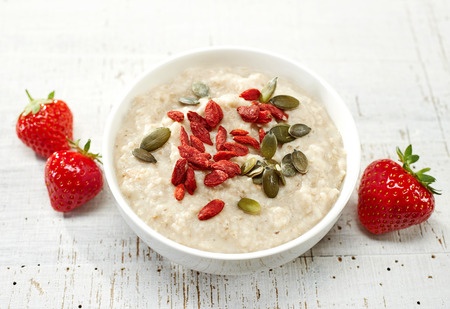
- Research provides a great example of how processing such as milling can alter food materials radically to improve their nutritional health benefits.
Porridge might not excite everybody’s tastebuds in the morning , especially if it is coarse and rough but it may by a nutritional godsend as research shows it can significantly lower blood sugar levels. It also demonstrates how food processing has its part to play in turning indigestible foods into something more valuable and nutritious.
The premise is that starch and dietary fibre in a wheat porridge is digested more slowly in the gut because of the way milling generates a much more coarse particulate product. Generally, milling wheat grains damages the cellular endosperm so severely that the starch in the flour which is usually termed resistant starch is then available in a much more readily digestible form. Most cereal foods are milled to improve the accessibility of starch to gut hydrolysis. Reducing the level of damage by less milling appears to release more of the resistant starch which implies a slowing of its rate of hydrolysis to sugar because it is not so easily or readily available with the consequence that following a meal, metabolism is not as high.
Research at King’s College in London showed in subjects who ate the wheat porridge made from the coarse and larger particulates enjoyed significantly lower blood sugar levels compared to their consumption of a porridge made from a finer and refined wheat flour. This was a randomised crossover trial where the participants were given 55g of starch as either coarse (2mm particles) or smooth (0.2mm particles) in the wheat porridge. All other factors were equalised i.e. all meals contained the same ingredients and nutrient levels save for the physical nature of the wheat used. These nutritional values were 57.8g of available carbohydrate in the form of 55.4g of starch and 2.4g of sugar, 5.2g of dietary fibre, 9.3g of protein, 1.6g of fat and 0.2g of salt. The subjects needed an ileostomy so that access to the digested food was possible. The study also measured changes in metabolic and hormonal factors such as insulin, C-peptide, lipids and gut hormones as well as blood sugar levels.
Following consumption, the blood sugar levels of the subjects who had eaten the rough porridge were 33% lower, their insulin responses were 43% lower as were their C-peptide levels (40% lower) and their glucose-dependent insulinotropic polypeptide concentration (50% lower) compared to these values measured after eating the finer porridge.
The study also established that eating the rougher porridge produced less of the undesirable sugar low following a more rapid peaking in blood sugar. Cathrina Edwards, the lead researcher in the Division of Diabetes and Nutritional Sciences at King’s College is quoted :-
“The way in which foods are processed clearly has a big impact on how much of the nutrients/calories are absorbed from that food, but this important information is not reflected on food labels.
Our research has shown that there is a relatively easy way to limit the availability of starch/calories from food simply by preserving more of the natural structure of plant-based ingredients.”
In terms of further research, the physical nature of particulates in food is worth exploring. Milling is a ubiquitous process in a number of food operations to release juice from fruit, starch from cereal grains etc. In this particular case, the quality of the starch generated influences its digestibility and so has important consequences in the weight management category, for minimising the onset and impact of type-2 diabetes and reducing cardiovascular disease.
Reference
Edwards, C.H., Grundy, M.M.L., Grassby, T., Vasilopoulou, D., Frost, G.S., Butterworth, P.J., Berry, S.E.E., Sanderson, J. Ellis, P.R. (2015) Manipulation of starch bioaccessibility in wheat endosperm to regulate starch digestion, postprandial glycemia, insulinemia, and gut hormone responses: a randomized controlled trial in healthy ileostomy participants. Am. J. Clin. Nutr. First published: September 2, 2015, doi: 10.3945/ajcn.114.106203



Leave a Reply